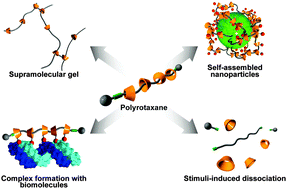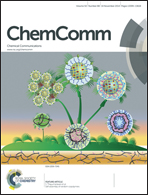Threaded macromolecules as a versatile framework for biomaterials
Abstract
Polyrotaxanes (PRXs) are a class of supramolecular threaded macromolecules, in which cyclic molecules are threaded onto the main- or side-chain of polymers. To date, various studies have been conducted on the synthesis of PRXs, and various combinations of cyclic molecules and polymers that can form a PRX have been discovered. Among these combinations, PRXs composed of cyclodextrins (CDs) and a linear polymer have attracted much attention and have been investigated by many researchers. Because of the non-covalently associated characteristic of PRXs, these supermolecules exhibit unique properties, such as the dynamic motion of the threaded cyclic molecules along a polymer axle and complete dissociation of the supramolecular structure, that are never observed in other synthetic polymers. These inherent properties of PRXs are of interest in the design of novel biomaterials, such as hydrogels, scaffolds in tissue engineering, drug delivery carriers, and polymer–drug conjugates. Thus, various studies have been conducted to utilize PRXs as a framework for biomaterials. In this review, we describe the recent progress in biomaterial application of PRXs such as drug delivery and gene delivery.

- This article is part of the themed collection: Polymer Self-Assembly

 Please wait while we load your content...
Please wait while we load your content...